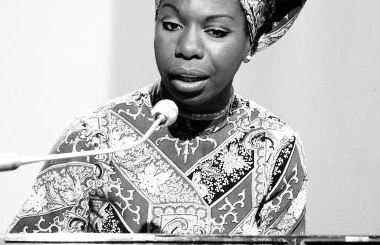Don’t Let Me Be Misundertood by Nina Simone Lyrics Meaning – Peeling Back the Layers of a Soulful Plea
Lyrics
If sometimes you see that I’m mad
Don’t you know that no one alive can always be an angel?
When everything goes wrong, you see some bad
But oh, I’m just a soul whose intentions are good
Oh Lord, please don’t let me be misunderstood
You know sometimes, baby I’m so carefree
Oh, with a joy that’s hard to hide
And then sometimes again it seems that all I have is worry
And then you’re bound to see my other side
But I’m just a soul whose intentions are good
Oh Lord, please don’t let me be misunderstood
If I seem edgy
I want you to know
I never mean to take it out on you
Life has its problems
And I get more than my share
But that’s one thing I never mean to do
‘Cause I love you
Oh, baby, I’m just human
Don’t you know I have faults like anyone?
Sometimes I find myself alone regretting some little foolish thing
Some simple thing that I’ve done
‘Cause I’m just a soul whose intentions are good
Oh Lord, please don’t let me be misunderstood
Don’t let me be misunderstood
I try so hard, so please don’t let me be misunderstood
No, no, no
Nina Simone, with her distinctive timbre and a penchant for raw, emotive storytelling, has woven intricate tales of the human condition throughout her career. Among her illustrious oeuvre, one song that indelibly carves out a space in the listener’s psyche is ‘Don’t Let Me Be Misunderstood.’ Within its melody and verses, lies a depth of vulnerability and a universal cry for empathy that pierces the fabric of simply being heard to uncover the nuanced threads of human complexity.
The song, a bluesy anthem of personal revelation, navigates the tempestuous waters of self-perception and misjudgment. It reveals layers of intent, frailty, and the intrinsic plea for understanding that resonates just as profoundly today as it did at the height of Simone’s fame. Let’s dive deep into the soul-stirring eloquence of this classic track, dissecting the meaning and unraveling the cryptic messages hidden within its stanzas.
Behind the Melancholy Melody: A Tale of Two Sides
Setting the stage with a juxtaposition of moods, ‘Don’t Let Me Be Misunderstood’ opens with a haunting introspection. Simone reflects—perhaps to a lover, perhaps to the world—that while she occasionally exudes elation, she is equally capable of succumbing to worry. This contrast is not one of duplicity but rather the multifaceted nature of the human psyche, something that Simone communicates with simmering conviction.
Her voice carries the weight of someone who has traversed peaks of joy and valleys of despair, providing the perfect vessel for a message that highlights our innate duality. The melody acts as a microcosm of the emotional spectrum theoretically capable by all, crafting a universal appeal that listeners from any walk of life can resonate with.
The Heavier Burden: Deconstructing the Chorus
The chorus stands as an emphatic refrain, echoing Simone’s foundational plea—her want of grace. She sings of being ‘just a soul whose intentions are good,’ a line that underlines the essence of human earnestness. Her invocation to a higher power not to be misjudged is doubly poignant, carving out sacred space for her humanity while subtly indicting a world too prone to hasty condemnation.
Throughout the anthem, Simone beseeches not for blind absolution, but for the fairness of being understood in her totality. The effectiveness of the refrain lies not just in its lyrical resonance, but in the raw delivery that only Simone could master, teetering between a confessional whisper and a powerful declaration.
Intimations of Vulnerability: Human Flaws Exposed
The bridge strips down the facade even further as Simone admits to her flaws, her ‘human’ missteps, and the solitary regret that shadows her mistakes. She reveals a tenderness that’s universally relatable—an inadvertent hurt caused, the ‘little foolish things’ we’ve all done. It’s in this admission where the song’s soul connects deeply with the listener, bridging the gap between artist and audience.
Unlike the defiant roar often found in protest songs or anthems of empowerment, ‘Don’t Let Me Be Misunderstood’ offers a subtler, more intimate kind of strength—one rooted in introspection and authenticity. It is here that Simone’s artistry shines brightest, boldly embracing imperfection and the repercussions it may carry.
A Hidden Meaning? Searching Beyond the Lyrics
Some argue that hidden between the bluesy licks and Simone’s sultry delivery lies a cry for civil rights—an expression of the misunderstood plight of an entire generation. Listeners might perceive the song as Simone’s commentary on the societal alienation of the marginalized or even her own life as a black woman and artist straddling tumultuous times.
Her request to not be misjudged could be seen not just as personal, but as a collective appeal from those whose voices have been disregarded or misinterpreted by the annals of history. This layer of interpretation only serves to enhance the song’s poignant plea, suggesting a plea for understanding that extends far beyond any one person’s experience.
Memorable Lines That Echo Through Time
Certain lyrics in ‘Don’t Let Me Be Misunderstood’ have transcended the confines of the song itself, becoming anthems of personal identity and the respect it demands. Phrases like ‘I’m just a soul whose intentions are good’ have been etched into the collective memory, becoming touchstones for anyone who’s felt unfairly judged or pigeonholed.
The simplicity and directness of these lines belie their power, providing a mantra for self-forgiveness and a reminder of the common emotional ground we share. As much a lament as a declaration, these words continue to resonate, providing a stark reminder of the timeless nature of Simone’s art, and the enduring quest for understanding in the complex tapestry of human relations.








